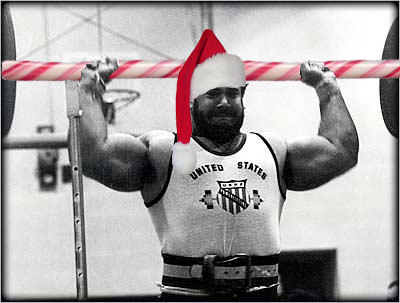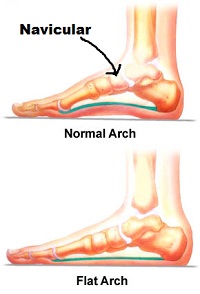The other day in the Foot Awareness we talked about being aware what our feet are doing. Faults such as walking “duck footed” or having a collapsed arch (AKA “navicular drop”) is is important for running economy, but also lifting technique. Either way it’s important because if the mechanics aren’t efficient, then more energy is consumed to accomplish the same task. Solid mechanics will utilize less energy, therefore you can run faster or lift more weight with the same energy and effort.
If you have either of the above problems, then the first thing to do is learn awareness of what is wrong and what is right. If your toes are habitually rotated out, then make it a point to walk and stand with them forward. If your toes have been habitually pointed out, then it’s likely that the arch is habitually collapsed. While standing with your toes pointed forward, shift your weight from your normal collapsed position (which is the inside of the foot) to the outside of the foot. Take note of where your knee shifts to when you do this (it will externally rotate slightly). Use this video as a guide if you’re confused. This new position is your habitual goal. To help learn it, do a set of at least 20 contractions shifting your weight from the inside to the outside of the foot. This will use tire some of the muscles in the foot and shank to help learn positional awareness.
Now that you are aware of this new position, you need to walk on it. Make it a point to walk with the toes forward and on the outside of your foot. It will feel very funny and you’ll find that you often forget to do it. For example, my right foot (the problematic one) will revert back to its collapsed position when I take a piss. After several weeks of paying attention to keeping the force application on the outside of my foot, I’ve shifted my focus to the distal end of the metatarsals of the “middle” and “ring” toes — it’s the lateral portion of the ball of the foot. This maintains the proper arch and knee position, but it’s overly emphasizing the lateral portion of the foot.
The first set of drills I want to bring to your attention are Russ Ebbets foot drills. These simple, non-equipment drills take about four minutes to complete. In the article, Russ has this to say:
Done daily these six drills will eliminate shin splints, Achilles’ tendonitis, plantar fasciitis, lessen the chance of a severe ankle sprain and virtually all knee problems. The famous Rice Study done in the early 90s found that 79% of running injuries are from the knee down. One of the reasons I had successful teams is that my athletes made it to the competition day healthy and ready to compete. Season after season was completed with virtually no injuries.
Intriguing. I’ve started doing these drills every day and can definitely understand their utility. Whether you want or need to run, sprint, ruck, or move on your feet, they can help. You’ll feel various parts of your lower leg working that typically don’t get any specific work, and some of the drills will even have an effect all the way up through the hips. The six drills are based on three variations of movement: lateral change in the ankle (inversion/eversion), rotation of the hip (external/internal rotation), and frontal action of the hip (plantar/dorsi flexion).

The first drill focuses on inversion and eversion. Be sure to walk with a controlled “heel to toe” when doing all of these drills as it will have more of an effect on the muscles of the foot compared to stepping down with a flat foot. The eversion drill will probably show you how bad your eversion mobility is; a lack of eversion will make it difficult to shove the knees out. If you’ve ever noticed that shoving your knees out lifts the inside of your foot off the ground, then you probably need to improve your lateral ankle mobility.

These two drills will force stretching and contraction in the hip. You’ll feel like an idiot doing it, but you’ll also feel work throughout your hips. Remember to maintain the “heel to toe” walk.

I didn’t feel much when I did the “walking backwards on the toes” drill, although it helped warm-up my calf and achilles. However the dorsi-flexion “walking on the heels” will force contraction in the tibialis anterior, or the front of the shin.
Keep in mind that these drills aren’t a quick fix to any foot or ankle issues. They should be utilized daily to gradually improve the lower leg structures, but they can be used as a warm-up for running or sprinting. They will help improve the awareness of the foot’s articulation with the ground which will only improve mechanical efficiency in locomotion.
All of the attention spent on changing walking gait and doing these easy exercises may produce some soreness in the arch or lower leg. In future posts we’ll get into more drills, exercises, and mobility, but in the mean time just work a lacrosse ball over your arch to alleviate some tension.


